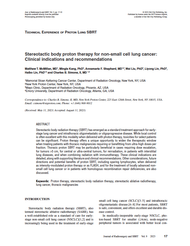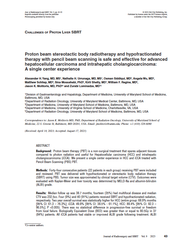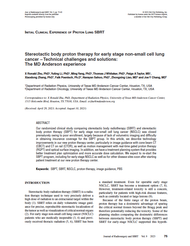- Home
- Journal Contents Downloads
- JRSBRT Downloads
- JRSBRT 9.1, p. 9-16
Product Description
Point-Counterpoint of Proton Versus Photon Liver SBRT
Proton versus photon radiotherapy for hepatocellular carcinoma: Current data and technical considerations
Hannah J. Roberts and Theodore S. Hong
Radiation is an accepted standard of care for unresectable hepatocellular carcinoma (HCC), and while photon radiation is the current standard, the use of proton beam radiotherapy (PBT) is an active area of investigation given its ability to better spare uninvolved liver. Patients with HCC typically have background liver disease and many patients die of their underlying liver function in the absence of tumor progression. Early photon-based series showed promising rates of local control however the risk of non-classic radiation induced liver disease (RILD) remains relatively high and may be associated with poorer outcomes. There is a theoretical advantage to PBT in its ability to spare uninvolved liver parenchyma and potentially allow for further dose escalation. There are technical considerations for image guidance, respiratory motion management, and conformality to both PBT and photon radiotherapy that are critical to optimizing each modality. Whether the use of PBT affects clinical outcomes is the subject of the ongoing NRG Oncology GI003 trial, that randomizes patients with HCC to protons or photons. This article reviews the technical differences and literature on individual outcomes for PBT and photon radiation as well as the available comparative data.
Keywords: Hepatocellular carcinoma, SBRT, proton radiotherapy
After payment has been processed for your order of a digital copy (PDF) of this article, you will see a download link on your completed order page and also receive an email containing a download link. The links, which will enable you to download one copy of the article, will expire after 24 hours.
 Loading... Please wait...
Loading... Please wait...








